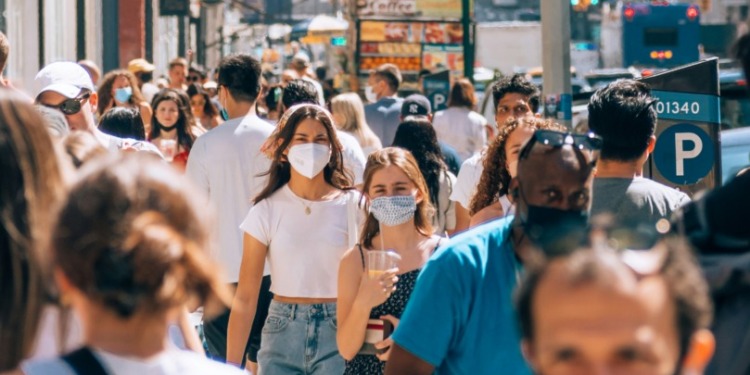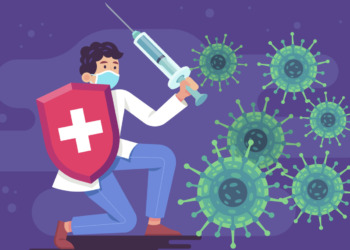In the wake of the COVID-19 pandemic, in 2021 a global process was launched to develop an accord on pandemic preparedness and response. It had become clear to the world that major infectious disease outbreak threats affect us all now and will affect all of us in future years. The International Negotiating Body is meeting right now, March 18-28, to finalize the treaty language.
The current Pandemic Treaty drafting process is a unique opportunity to globally fully integrate animal health, biodiversity preservation, ecological, environmental, and plant health, i.e., “One Health,” as a priority.
A draft text exists which in theory is in its last phase of consultations. The draft language may be aspirational as many matters remain unresolved, as noted by David P. Fidler in a recent piece for the U.S. Council on Foreign Relations Think Global Health.
What is included now: Strengths and weaknesses
The Pandemic Agreement’s broad objective is for “The Parties [to] commit to take measures to progressively strengthen pandemic prevention and coordinated multisectoral surveillance, taking into account national capacities and national and regional circumstances.” (Article 4.)
The draft is now 29 pages, covering 37 Articles, and is the product of intensive drafting efforts, with vast numbers of comments submitted, including those from the One Health community. Sections deal with many critical subjects such as reporting and surveillance, equitable resource sharing, coordination of response, research and data sharing, public health measures, ethical considerations, financing, monitoring and evaluation, capacity building, international cooperation, adaptability, and flexibility.
Specifically, Article 5 commits the parties “to promote a One Health approach for pandemic prevention, preparedness and response that is coherent, comprehensive, integrated, coordinated and collaborative among relevant actors and sectors.”
Subsections under it describe how this is to be accomplished:
- implement relevant national policies, strategies and measures that reflect a One Health approach;
- promote the effective and meaningful engagement of communities in the development and implementation of policies, strategies and measures to prevent, detect and respond to zoonotic outbreaks; and
- promote or establish, as necessary, One Health workforce training and continuing education programmes for public health, animal health and environment sectors, to build complementary skills, capacities and capabilities.
That the One Health concept is embedded in the draft is positive, of course; but mention does not mean adequate engagement and implementation.
Further, despite text language, there is a concern among those who advocate for a comprehensive operationalization of One Health, that it will not be fully understood or given balanced treatment.
Here are the essential questions that require an answer in the Pandemic Agreement:
- Will the treaty only focus on the health of humans?
- Will drivers of pandemic threats such as anthropocentric degradation of ecosystems, wildlife health and welfare be addressed not just as an understanding of their own inherent value but also in terms of how their health and welfare can and does impact human health?
- How will risky human behaviors such as wildlife trade be dealt with?
Implementing a Pandemic Agreement
The current draft text states that “Secretariat functions for the WHO Pandemic Agreement shall be provided by the WHO Secretariat.” (Article 24).
We know that the World Health Organization (WHO) is focused on human health. Prioritizing One Health for pandemic “prevention” will depend significantly on the composition of international organization leadership, each organization’s members’ priorities, mandates, and commitments.
In short, what will be needed is adequate representation, staffing, and tasking from animal, plant, and environmental sectors focused on “prevention.”
The WHO and its regional initiatives are well regarded for their more than 100 years of leadership in addressing factors affecting human health with extraordinary professional staff and linkages to the medical profession, related research institutions, and interactions with private sector pharmaceutical and medical device companies.
On many occasions, the WHO has demonstrated capacity to notify the global community when there have been major infectious disease outbreaks, and its important focus on the many non-communicable diseases that threaten human well-being. And the WHO is a major player today in the One Health Quadripartite collaborations with WOAH, FAO and UNEP.
Related Articles: The Concept of One Health Turns Global in 2021: How it was Born | One Health and Gender: Why The Two Need To Become One | The One Health Story: It’s More Than Infectious Diseases
That said, past experience is not entirely reassuring in light of WHO’s performance in its early response to HIV/AIDS in the 1980s or COVID-19. Nor can we find reassurance in the dearth of instances that reflect whole-hearted collaboration with other sectors. While there have been positive signs that One Health is being embraced by WHO, there are many who remain unconvinced of the WHO’s support for multisectoral attention, and collaboration in pandemic initiatives.
From an outsider’s vantage point, it is hard to gauge the extent to which current WHO professionals have now internalized and embraced an integrated approach and/or how prepared WHO is to prioritize One Health integration into all its decisions. It may be that the current WHO leaders and most of the Pandemic Agreement drafters and negotiators are fully on board with the critical importance of a multisectoral effort to ‘prevent’ and deal with pandemics. As the saying goes, “the proof will be in the pudding.”
Dispute Settlements
Compliance among member countries with the obligations of a Pandemic Agreement is essential. Yet, as now written, the treaty is without teeth.
Compromise is necessary in today’s geopolitically polarized world where entities outside of government and outside the international agencies have great power. But the lack of incentives for compliance limits the likelihood of widespread impact.
Dr. David Fidler puts it this way: “[the pandemic treaty text] incorporates weak mechanisms — a conference of the parties and a standard dispute settlement process that states rarely, if ever, have used in global health… the negotiating text does not constitute transformative changes in holding sovereign states accountable.”
The future
Whatever the end result with respect to these Pandemic Agreement negotiations, they do finally put One Health thinking clearly on the global health agenda. This should be the moment to see decades of accumulated scientific knowledge and experience shared across sectors brought to the fore to fully embrace and operationalize One Health.
Not to have it happen will be, for all of us, animals, ecosystems and humans, to miss an extraordinary chance to enhance collective health security, to avoid repeating mistakes of the past and to “prevent” future pandemics.
This Pandemic Agreement is a window for the global community to do the right thing for us all. Let us hope it happens.
Editor’s Note: The opinions expressed here by the authors are their own, not those of Impakter.com — Cover Photo Credit: Yoav Aziz.










